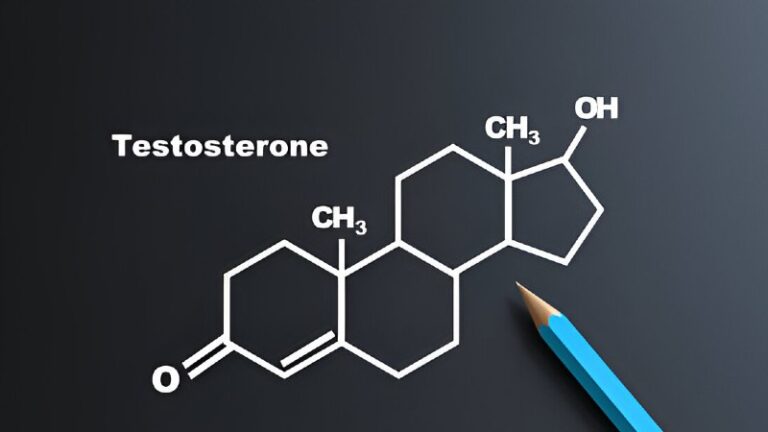In recent years, men’s health has gained considerable attention, especially concerning testosterone deficiency and its impact on overall wellbeing. While traditional testosterone replacement therapies (TRT) dominate the landscape, emerging alternatives like enclomiphene offer promising new avenues.
What is Enclomiphene?
Enclomiphene is a selective estrogen receptor modulator (SERM) derived from clomiphene citrate but purified to contain predominantly the enclomiphene isomer. Unlike direct testosterone supplements, enclomiphene acts on the body’s hormonal axis to stimulate natural testosterone production, particularly in men with secondary hypogonadism.
- Selective action: Targets estrogen receptors in the brain
- Promotes: Release of luteinizing hormone (LH) and follicle-stimulating hormone (FSH)
- Stimulates: Testicular production of testosterone and sperm
This nuanced approach preserves fertility, a critical advantage over conventional testosterone therapy.
The Science Behind Enclomiphene
Understanding the Hypothalamic-Pituitary-Gonadal (HPG) Axis
The HPG axis is the body’s central hormonal command center regulating reproductive hormones. Estrogen plays a key feedback role here, signaling the brain to regulate testosterone production. Enclomiphene blocks estrogen’s feedback on the hypothalamus, essentially “tricking” the brain into boosting LH and FSH secretion, which naturally elevates testosterone.
Why This Matters
While testosterone itself is often the headline, enclomiphene’s action affects a delicate hormonal balance, impacting sperm production, estrogen regulation, and even metabolic functions like glucose management. For instance:
- Fertility preservation: Maintains or improves sperm parameters due to increased FSH.
- Metabolic health: Emerging research suggests enclomiphene may improve insulin sensitivity, helping manage type 2 diabetes in hypogonadal men.
Enclomiphene vs. Traditional Testosterone Replacement Therapy (TRT)
When comparing enclomiphene to TRT, it’s essential to consider multiple dimensions beyond testosterone levels alone. The following table summarizes key differences:
| Parameter | Testosterone Replacement Therapy (TRT) | Enclomiphene |
|---|---|---|
| Mechanism | Direct supplementation of synthetic testosterone | Stimulates natural testosterone production via LH/FSH |
| Fertility Impact | Suppresses sperm production; often causes infertility | Preserves or improves fertility |
| Estrogen Levels | Often elevated due to aromatization; may require additional drugs | Moderate, physiologically balanced increase in estrogen |
| Delivery Form | Injections, gels, patches, creams | Oral medication only |
| FDA Approval Status | Approved | Not yet FDA-approved; available via compounding pharmacies |
Unique Benefits of Enclomiphene You Should Know
While much of the focus lies on testosterone, enclomiphene offers advantages that often go unmentioned:
- Lower Risk of Cardiovascular Side Effects: TRT sometimes associates with increased cardiovascular risks due to supraphysiological hormone levels. Enclomiphene’s more natural modulation reduces this concern, though more studies are needed.
- Supports Hormonal Balance, Not Just Quantity: By modulating the body’s hormonal axis, enclomiphene supports a more physiological balance between testosterone and estrogen.
- Improved Mood and Cognitive Effects: Early clinical observations report mood stabilization and better mental clarity in patients treated with enclomiphene compared to TRT.
- Potential Role in Metabolic Syndrome: Because it influences insulin sensitivity, enclomiphene may become a valuable adjunct in managing metabolic syndrome symptoms alongside testosterone deficiency.
Example
John, a 38-year-old with secondary hypogonadism, initially tried TRT but faced issues with mood swings and reduced fertility concerns. After switching to enclomiphene under medical supervision, John noticed improved energy, stable mood, and no fertility decline after six months.
Safety and Side Effects
Like all medications, enclomiphene carries potential side effects, but they tend to be milder than those seen with TRT:
- Dizziness
- Erectile dysfunction (rare)
- Fatigue
- Mood fluctuations
- Gynecomastia (very rare)
Since long-term studies are limited, medical supervision and regular hormone monitoring are essential.
Dosage and Administration Guidelines
Enclomiphene is generally prescribed at low oral doses to start, commonly:
- Initial dose: 12.5 mg daily
- Maintenance dose: May be adjusted to 25 mg every other day based on response
Consistency in timing, typically in the morning, aligns with natural testosterone circadian rhythms. Regular blood tests monitoring testosterone, LH, FSH, and estradiol levels help optimize dosing.
The Future of Enclomiphene in Men’s Health
While enclomiphene is currently off-label and awaiting broader regulatory approval, its multifaceted benefits position it as a potential game-changer in hormone therapy.
- Expanded indications: Beyond hypogonadism, it could be part of integrated treatment plans for male infertility and metabolic disorders.
- Personalized medicine: Enclomiphene’s ability to preserve fertility and provide hormonal balance makes it attractive for younger men and those wishing to avoid the downsides of TRT.
- Combination therapies: Future protocols might combine enclomiphene with lifestyle interventions or other medications to optimize male hormonal health holistically.
Conclusion
Enclomiphene offers a novel, naturalistic approach to managing male testosterone deficiency and associated conditions. Its unique mechanism, fertility preservation, and broader hormonal benefits mark it as a promising alternative or adjunct to traditional testosterone replacement therapies.
Though more research is needed to fully understand its long-term safety and broader applications, enclomiphene stands out as a forward-thinking option in the evolving landscape of men’s hormonal health.
If you’re considering testosterone therapy or seeking alternatives that protect fertility and hormonal balance, enclomiphene is worth discussing with your healthcare provider.
Frequently Asked Questions (FAQs)
What is enclomiphene used for?
Enclomiphene is primarily used to treat men with secondary hypogonadism by stimulating natural testosterone production. It is also being explored for male infertility, metabolic issues, and hormonal balance.
Is enclomiphene better than testosterone replacement therapy (TRT)?
Enclomiphene may be a better choice for men who want to maintain fertility, as it stimulates natural testosterone production rather than replacing it. Unlike TRT, it doesn’t suppress sperm production.
How long does enclomiphene take to work?
Most users begin noticing effects from enclomiphene within 2 to 4 weeks, with full hormonal benefits typically realized after 2 to 3 months of consistent use.
Is enclomiphene FDA approved?
As of now, enclomiphene is not FDA-approved for general use but is available through compounding pharmacies and clinical prescriptions under medical supervision.
Are there side effects of taking enclomiphene?
Yes, enclomiphene may cause mild side effects such as headaches, mood changes, visual disturbances, or increased libido. Most side effects are temporary and manageable under a doctor’s guidance.


